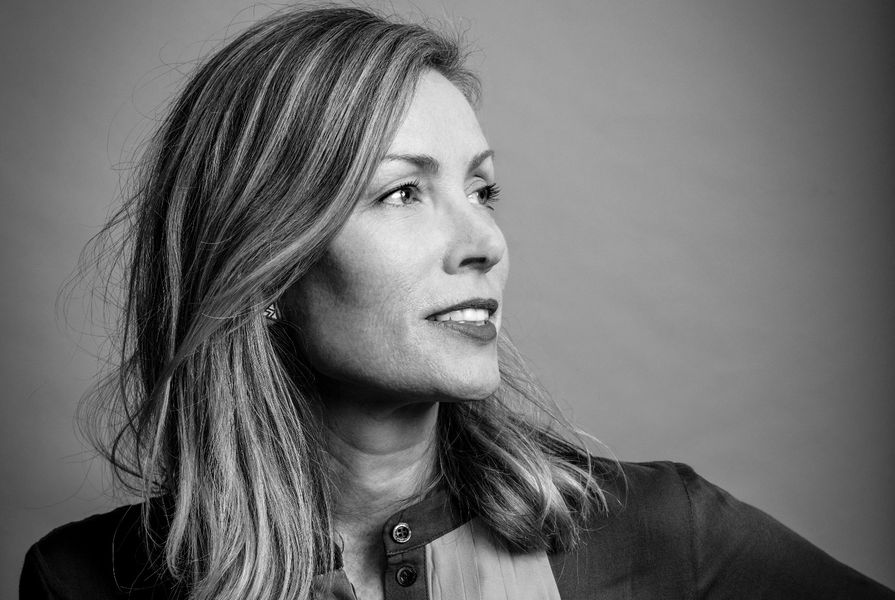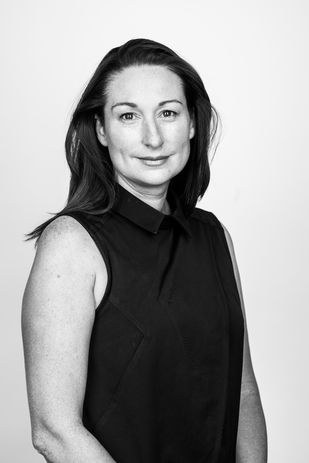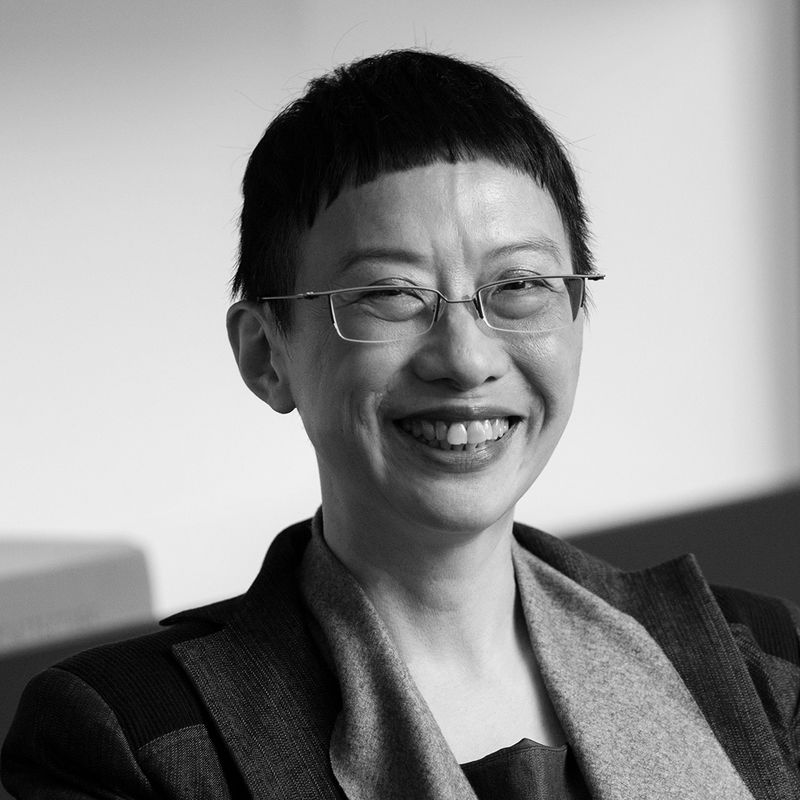What research is actually happening in large architectural practices in Australia? How are practices pursuing research and what are their motivations? What do they see as the benefits and how are they justifying the cost? What are the challenges and constraints? More importantly, what are the big-picture opportunities for how research could be increased, in quality and quantity and effect, across the entire sector? Furthermore, how could the large-scale research happening in practice, and that in academia, be brought into closer alignment for the mutual advantage of the profession, the academy and the built environment itself?
These questions seem timely. Australian practices are doing more research than ever before and in a more organized and systematic way. They are also sharing their findings – certainly within their own internal cultures, but also in industry forums and symposia and often with a broad public audience, via their websites and other means. But conceptions of the role and value of research in large practice are far from settled – indeed, they appear to be in a state of rapid flux. We knew something of what research such practices were doing, but did not have a full sense of whether and what sustained, ambitious programs of research – the kind that are fuelled by data gathering and analysis, that require time, equipment, software and specialized knowledge – are being pursued.
To find out more, we invited a number of large practices operating in Australia to participate in a roundtable discussion about how they frame and prosecute research. We had two separate discussions, in February 2018, with representatives from nine large practices across Australia: Rob Asher, design and research and development lead, Cox; Christian Derix, director, Woods Bagot Superspace; Michael Hegarty, national practice leader, GHDWoodhead; Caillin Howard, managing director, Hames Sharley; Diane Jones, director, PTW; Ann Lau, director, Hayball; Ninotschka Titchkosky, principal and strategic lead of digital innovation ground, BVN; Kellie Payne, director, Bates Smart; and Michaela Sheahan, researcher, Hassell.
With such a mix of practices, the conversation was less about the (sometimes commercially sensitive) detail of the research each was presently doing and more about how and why they were doing it. At this level, and even given the challenge of collaboration between direct competitors, there are clearly opportunities for cooperation, as the participants themselves observed. Sheahan noted that “for some reason this year’s the sweet spot for research in practice; everybody’s talking about it. I’ve been waiting for this year for ten years and it’s great to have an opportunity to talk about it. I think there’s momentum in academia and in practice for research to have a higher profile.”
Howard concurred. “To share our knowledge freely makes sense, because it’s the interpretation and use of that knowledge which is where the value is.” He added, “We’re at this beautiful moment where we’ve got access to a lot of knowledge. But we’re all working out how to do research individually, because it is our competitive difference. We have a responsibility to elevate the profession and empirical data and evidence-based design are a cornerstone of that.”
There are precedents for such cooperation. In Europe, architectural practices have been sharing their research experiences in a series of symposia held in Gothenburg, Sweden (2013), Oslo, Norway (2016) and Aarhus, Denmark (2017), under the title “The Changing Shape of Practice.” These were initiated by Michael Hensel of the Oslo School of Architecture and Design and, while held in Europe, included speakers from North American practices Kieran Timberlake and SHoP Architects.
However, our task here is to summarize and trace a path through our own roundtable discussions, both of which were lively, frank and revealing. What follows is less a verbatim account and more of an identification of themes and trends, surprises and insights.
It is notable that the practices were all at different stages of development in organizing and systematizing research, despite being united in their intention to do so. At Hayball, for example (where – full disclosure – one of your authors, Naomi Stead, has an advisory research leadership role), Ann Lau described a practice that is “in many ways still inventing the system to deal with research holistically … [we are] at the early phase of capturing thematics, putting in the right resources and the right people to capture the information.”
Other practices are much further down the path. One of the first things we learned was that some organizations have already moved well beyond basing their core business solely on the provision of architectural design services. Alongside and sometimes instead of producing built works, their outputs include reports, policies, proposals, urban plans and ideas as well as contract research for clients. Howard, for example, described a Hames Sharley project in which the architects had gathered and analysed data on topography, examined the long-term value of agricultural and industrial land, plotted population growth and accounted for construction costs and productivity to determine the smartest, cheapest and most environmentally sustainable location for a light rail corridor. The contribution they made, however, was not just that of identifying where government should route light rail. Howard believes that the practice contributed the knowledge needed to “depoliticize decision-making. ” To get to this point, Hames Sharley has invested in its own research capacity with the aim of “being more of a strategic player and less of a service provider.”
Kellie Payne, director, Bates Smart.
Each of the large practices outlined similar investments, albeit at different stages of development and in various ways. Some, like Bates Smart, are building research capacity using existing staff, while others, like Woods Bagot, have brought in a whole team of researchers with existing track records and networks. Woods Bagot’s research arm, called Superspace, developed out of the Computational Design Research Group at Aedas in London led by Derix. Derix now leads a team of about twelve at Woods Bagot. Their work brings together advanced spatial analysis and strategic space planning with artificial intelligence, data science and generative computation.
Bates Smart, by contrast, has “resisted dedicating staff to pure research in the office,” preferring a diffused ownership of knowledge and innovation, which is then transferred to a dedicated team attached to a project. Rather than bring in research expertise, the practice preferred to keep its focus on design, teaming up with academic or independent researchers in specific areas when appropriate. Recently Bates Smart worked with Roger Ulrich of the Center for Healthcare Building Research at Chalmers University of Technology in Sweden, on a project around health outcomes in hospitals that fed into the award-winning design of the Royal Children’s Hospital in Melbourne (in joint venture with Billard Leece Partnership).
It makes some sense to partner with academic researchers. PTW has done so regularly, through a series of Australian Research Council (ARC) Linkage grants focused on the design of courtrooms, and now has a new project with academics from the University of New South Wales on multigenerational living for older people. In both areas, the aim is to secure empirical research for buildings that affect people’s lives. Cox, too, is a partner in an ARC Linkage grant, one on steel in low-rise construction, while Hayball has been involved in initiating a number of ARC Linkage grants with the University of Melbourne’s Learning Environments Applied Research Network – Association for Learning Environments and Innovative Learning Environments and Teacher Change – mainly in the area of research and innovative learning environments and the performance of students and teachers in learning spaces. Cox also sponsors students studying for their doctoral degrees and most of the practices have staff teaching in university architecture courses. Hassell has worked with academics from the University of Melbourne “on the staff attraction and retention in hospitals and how we can build better hospitals to address those issues for the client. So we’re looking at non-built issues for the client and how we can address them through the built environment.” Overall, many large practices seem to have seen the value in collaborating with specific academic researchers on specific projects, greatly increasing their own research capacity and funding with the very significant subsidy and backing of the ARC.
Derix, whose background includes formal academic engagements at leading European universities, finds that the practice context enables him to build an expert team more easily, such that he believes they are now “way stronger than any university outfit in the field.” Secondly, for him and his team, being embedded in a large practice such as Woods Bagot makes it “more satisfying to be able to tackle complex research questions and problems and be able to actually develop the models and solutions to [them]. And then being able to test it on projects.” Several others concurred that architectural practice has the advantage over academic institutions in the formulation and testing of research questions in a practice context. As Payne put it, “At Bates Smart we’ve got the designers, we’ve got the information, we know how to synthesize it and we can apply it straight into a project to see if it works.” For Sheahan, the advantage she has experienced at Hassell is that researchers outside of academe are “wonderfully free because we don’t have the formal constraints, approvals and long timelines that universities often have. So it’s a much faster turnaround, which obviously is very beneficial to our clients.”
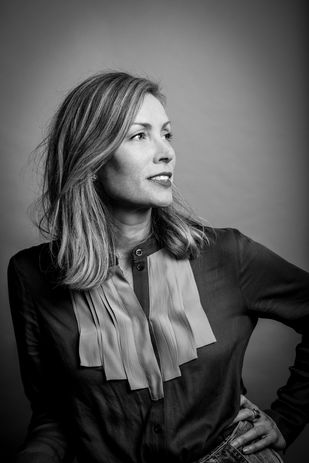
Nitotschka Titchkosky, now co-CEO of BVN.
BVN had a recent partnership with academics from the University of Sydney in order to take advantage of their robotic skills and equipment and to apply them to a live site fabrication project. That project explores bespoke ceiling infrastructure systems using carbon fibre and robotic weaving to achieve organic forms. Most importantly for Titchkosky, the ceiling project can have a major impact on an overlooked and otherwise mundane element of the commercial building industry. She argued that pursuing this project has “completely changed the way we think about how we do infrastructure.” It also points to a third party in architectural research – industry. For her the ideal research is one “that can merge some of the academic thinking and some of the practical thinking and make it much more open, more tangible and more relevant to industry to drive innovation.” Bates Smart has also teamed up with industry, in this case with a car windscreen manufacturing plant (that was threatened with closure) to develop the facade solution for the Children’s Hospital.
A second major thing we learned, presaged by Woods Bagot’s wholesale investment in an established team of researchers, is that scale and multidisciplinarity play a big role in how far architectural practices can go in repositioning themselves in the so-called knowledge economy. With around 850 employees, Woods Bagot is one of the largest practices based in Australia, but GHD is ten times that size. GHDWoodhead, the Australian architectural subsidiary of GHD, thus has access to an exponentially richer set of resources. GHD has its own laboratories and even a farm in New South Wales where research is conducted on soils, plants, irrigation techniques and other topics related to water sensitive urban design and landscape design. The architectural research team GHD established in 2011 has access to behavioural scientists, material scientists, spatial scientists and engineers of every specialization within the organization. GHD also has a very structured approach to research dissemination internally, with four international conferences each year and an annual program of developing young professionals called Smart Seeds, which is part team-building exercise, part design charrette and part innovation hub.
Even for an organization the size of GHD, it only makes sense to undertake research if there is a way to recoup the costs of doing so, be that directly or indirectly, in the short or medium term. Which brings us to our third discovery, that while all of the represented practices recognized the cost of and the need for research, there is no common way of funding it or of conceptualizing how it should be funded. As one of our party observed, “Sociological research requires long-term empirical and observational studies and long-term training. How do you actually slow down and devise a method to collect that empirical information? How do you dedicate the people to this long-term research? That’s the challenging aspect for full commercial practices.”
Of course, there are many ways of conceiving return on investment and some of the rewards of research are intangible – contributing to symbolic and cultural capital, reputation and profile. Titchkosky observed, “If you’re going to do pure research, you obviously also have to be comfortable [with the fact] that you’re making an investment without a direct return … it’s not just how you apply it into projects … there’s a return to your culture, a return to your brand, to what it is that you’re trying to create as a whole model for the practice.” Derix mentions awards. “ They don’t make a lot of money effectively, but they’re visible.” Titchkosky agrees. “The soft returns are quite powerful, it’s just that they’re hard to quantify in a boardroom. But people are getting their heads around that stuff now, it’s less of a concern than it was in the past, perhaps.” Lau notes that for Hayball, research is about looking beyond commercial ends. “Like most large practices, we are busy with the day-to-day design and delivery of projects. However, right now we’re in the process of developing a critical and reflective ‘intelligence’ culture that is about being mindful and analytical in how we deal with our design output.”
Rob Asher, design and research and development lead, Cox.
In terms of funding models, Cox puts aside a significant percentage of revenue into what it calls its “future fund.” People in the practice pitch internally to access those centrally kept funds and by this mechanism “research is funded at the national level.” It is a way of reallocating profits to research endeavours, distinct from whichever staff or offices in the practice earned it. Hassell introduced a radical new model twelve months ago, making its nine-person knowledge and strategy team a new business function. For ten years prior, the team had been, financially speaking, an overhead that “was ticking along quietly in the background, feeding into our design projects, but also feeding directly to our clients.” Under Mark Bray, global head of knowledge and strategy, a commercial imperative was introduced and it is now “externally focused.” The new strategy, Sheahan explains, “overcomes the major barrier to research, which is, who’s going to pay? Now we are selling the value of that research to the clients so that they can pay for it. That’s not always going to work and we do still conduct quite a lot of internal research using our own data about our own projects. But increasingly we are going out to other people just to say, we’re really interested in X, would you like to help us?” At the time of writing, the team has only been going for six months under the new mandate of earning fees from clients, so it is too early to tell if it will achieve self-sufficiency. Sheahan reports, “We have had some good success, though. We are very optimistic; there’s been a lot of interest from clients.”
One of the panellists put the challenge this way: “You have to make the argument to the client that our fee is this because we are going to provide the evidence that you need.” Likewise, another suggested the argument to clients that “our fee is the same but if you want any of this research and testing and checking, it’s an exclusion.” Howard summed up his views thus: “I’ve noticed research is way too much part of marketing and not commercial enough … I don’t like getting money out of research, I like money in research because then at least it’s real.”
We also asked our participants what they would do in research if money and the commercial imperative were no object. One of them said: “I think if we had limitless cash we would scale the amount of effort we put into research so that it was leading us as opposed to catching up … I would love nothing more than grabbing five or six or ten great minds and just parking them to create revolution in what the future looks like. Not what our clients need, which I will focus on, but what [for the] profession and [the] construction industry the future could look like. And that would be full of idealists and futurists and [we’d] have designers in there … a think tank that just freely mashes and plays. Because we’ve become so pragmatic and we work so hard to innovate, but [the way] we do it, one minute you’re looking down at a detail and a workroom process and a concept, and [the next] you pull your head up and you’ve got ten minutes to think about the strategy and the future of the next ten years. There are too many things going on at too many levels to spend the appropriate time at that big scale.”
The last discovery we made was one we hadn’t previously considered. We are familiar with the idea that knowledge is power and that both knowledge and power circulate unequally. We had thought about this in terms of the competition between architectural practices and the ways in which they benefit, financially and in their ability to influence decisions and shape the world, from having access to knowledge and the tools with which to unpack and apply knowledge. What we had not thought about is the ways in which knowledge and power circulate within architectural practices. The challenge of getting big practices to share their knowledge for the benefit of the profession and the public is mirrored internally. Howard explains, “One of my goals was to decouple knowledge [and] power within the firm. So that everybody’s got access [to knowledge]; people can’t hold networks, can’t hold information, et cetera, to have hierarchy within the firm. And four years later it’s still a work in progress, but we’re getting there … The decoupling of knowledge and power is the difference between being a one-person practice, a ten-person practice or a five-thousand-person practice. You can only scale if you have a selflessness and a faith that by letting go of power [gained through specialist knowledge] you create a bigger base and you can go somewhere. And that’s a cultural shift and it is generational. It’s a very different knowledge base from the hero architect space. The ‘we’ rather than the ‘me.’”
In conclusion, we learnt that the transformation of the architectural profession toward a more strategic agenda through knowledge begins with the design of the organization and its work culture. Centralizing knowledge in a dedicated team of researchers will likely lead to relationships between people that are very different from those in a situation in which knowledge is dispersed.
Source
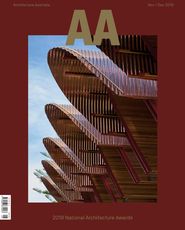
Discussion
Published online: 4 Mar 2019
Words:
Sandra Kaji-O'Grady,
Naomi Stead
Issue
Architecture Australia, November 2018
Source
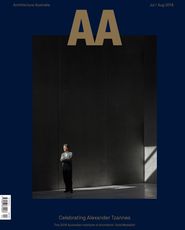
Discussion
Published online: 4 Mar 2019
Words:
Sandra Kaji-O'Grady,
Naomi Stead
Issue
Architecture Australia, July 2018

